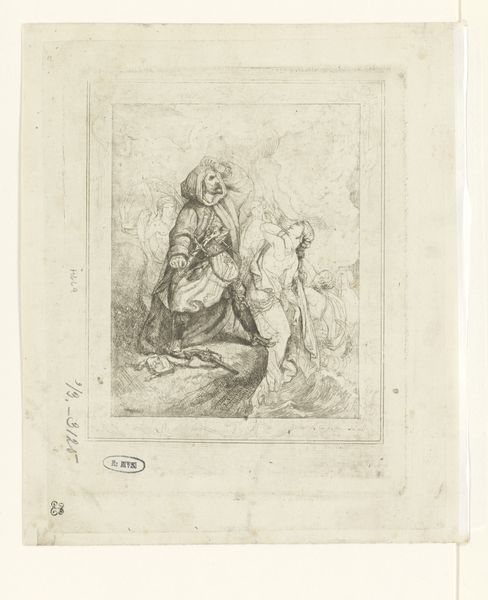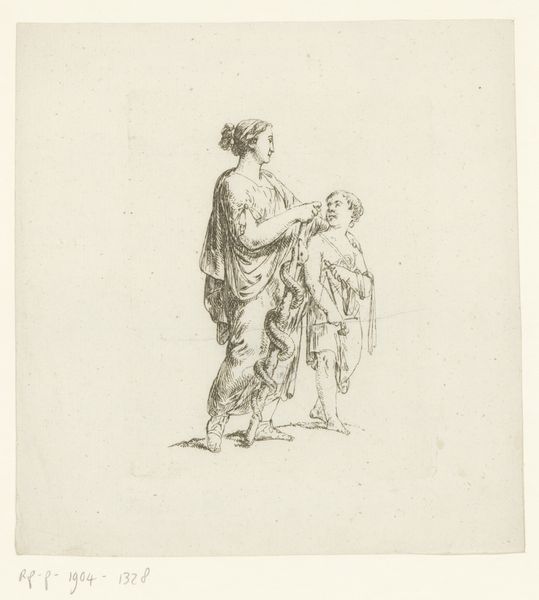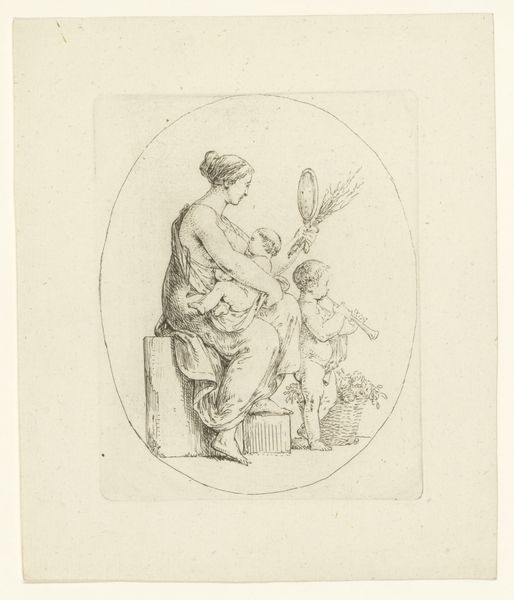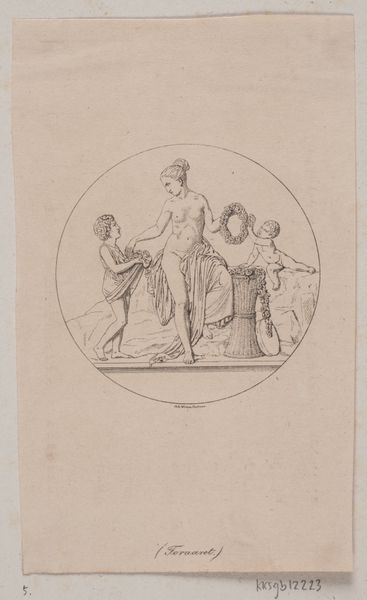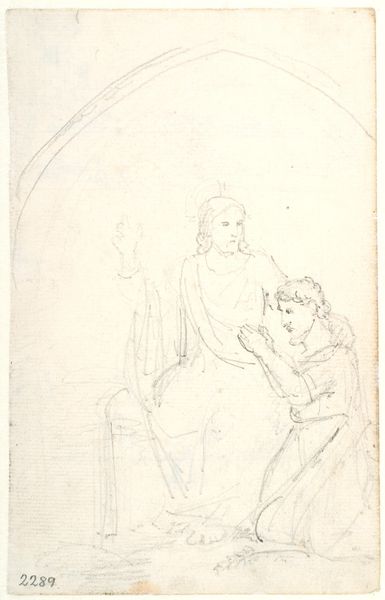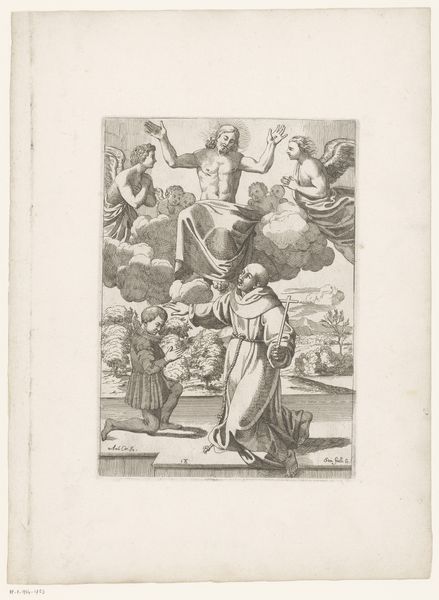
print, engraving
#
neoclacissism
#
allegory
# print
#
figuration
#
form
#
line
#
history-painting
#
engraving
Dimensions: height 141 mm, width 115 mm
Copyright: Rijks Museum: Open Domain
This etching, "Allegory of Eternal Love," was made by Christian Bernhard Rode in the 18th century. In it, we see symbols of love, loss, and memory intertwined. Two cherubs embrace a funerary urn, while a veiled woman leans mournfully upon it, holding a broken trumpet, a symbol of interrupted fame. The veil, a potent symbol across cultures, speaks of mourning but also of mystery and transition. We see this motif echoed in countless images throughout history, from ancient Roman funerary sculpture to modern-day expressions of grief. It points to the enduring human need to visually represent profound emotional states. Consider the way the cherubs cling to the urn: their embrace is not merely an act of affection but also of desperation, mirroring humanity’s attempt to hold onto what is inevitably lost. This image resonates with the psychoanalytic understanding that love and loss are inextricably linked, tapping into our collective memories of mortality and the subconscious yearning for permanence. This cyclical procession of symbols, resurfacing across epochs, demonstrates their enduring power.
Comments
No comments
Be the first to comment and join the conversation on the ultimate creative platform.
